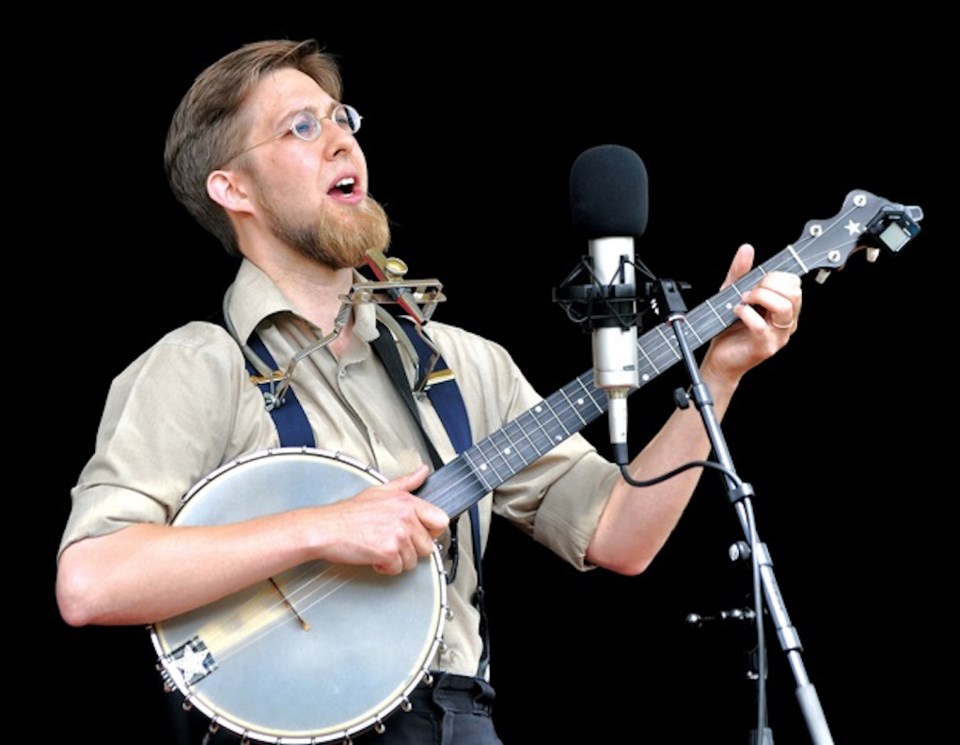“It would have died if it wasn’t for him,” says fiddler Kori Miyanishi about how Paul Silveria revived the square dance scene in Vancouver.
Convincing strangers to lock arms and square dance to old time banjo music is a normal part of Silveria’s job. To some, he’s known as Professor Banjo, often seen in his signature suspenders and vintage round spectacles reminiscent of an early 1900s American peasant. For more than a decade, the East Vancouver artist has been calling traditional Americana folk music and playing banjo in cities along the North American west coast.
As a caller, he usually shares the stage with a live band and announces dance moves that put dancers and musicians in sync. It’s the alchemy of turning crowds into communal dance circles that Silveria appreciates most about square dancing.
“What I really like is the moment when people realize that they can join in and dance along… A lot of people are really hesitant because they don’t really believe that they can just get up and dance,” says Silveria. “Square dances are fantastic in sort of breaking down people’s stigma that they don’t know how to dance.”
Early in Silveria’s career, standing behind the microphone and calling square dance moves was far from his ambition. The Portland, Ore. native described his unlikely start in banjo as having no prior training in music except the usual stints in school band. He began playing banjo “on a whim” and found a community in Portland his mentor, the late Bill Martin — godfather of Portland’s old time square dance scene — had helped build.
Not only did Martin teach Silveria square dancing calls but impressed upon students to engage beginners for the sake of the tradition’s livelihood. As Martin would say, “It’s a party first and a dance second.”
“A lot of damage has been done to square dancing over time with square dancing clubs that are very insular,” explained Silveria. As more experienced dancers formed clubs, the public began watching the complicated moves from the sideline.
His ability to engage a Canadian crowd unfamiliar with Appalachia square dancing was also observed by Miyanishi, who frequently provides the music to Silveria’s calls. Miyanishi highlighted Silveria’s ability to re-teach dances wherever he goes and is “completely comfortable and adapt at getting all people involved.”
Booking agent Kevin Bruce recalls seeing Silveria perform and remembers it was the musician’s authenticity and “clarity” that made him stand out. Bruce added Silveria always transports audiences close to the period the music originated from by refraining from delivering a “watered down” version to schools, or an edited style to a contemporary audience.
Silveria has created a school program that includes a Prof. Banjo performance and interactive square dance workshops. Outside of schools, however, Silveria has met unexpected challenges in Vancouver where venue spaces is limited and expensive.
“We had really fun dances and like 60 or 80 people would come out and I was kind of shocked that we had these dances that seemed very big and fun but we were barely breaking even. We weren’t making any money.”
Having faced inadequate funding as a performer, Silveria’s keen to provide affordable family programs in the city, including the Nov 28 with Shout!WhiteDragon at the Wise Hall. Visit professorbanjo.com for more information.
jennypeng08@gmail.com
twitter.com/JennyPengNow



